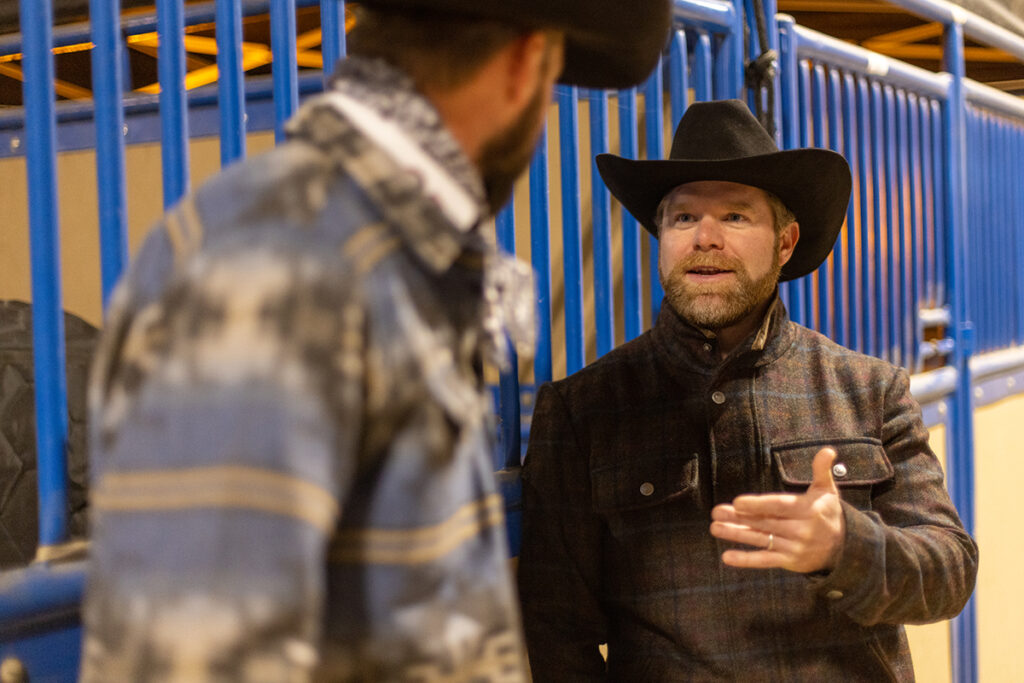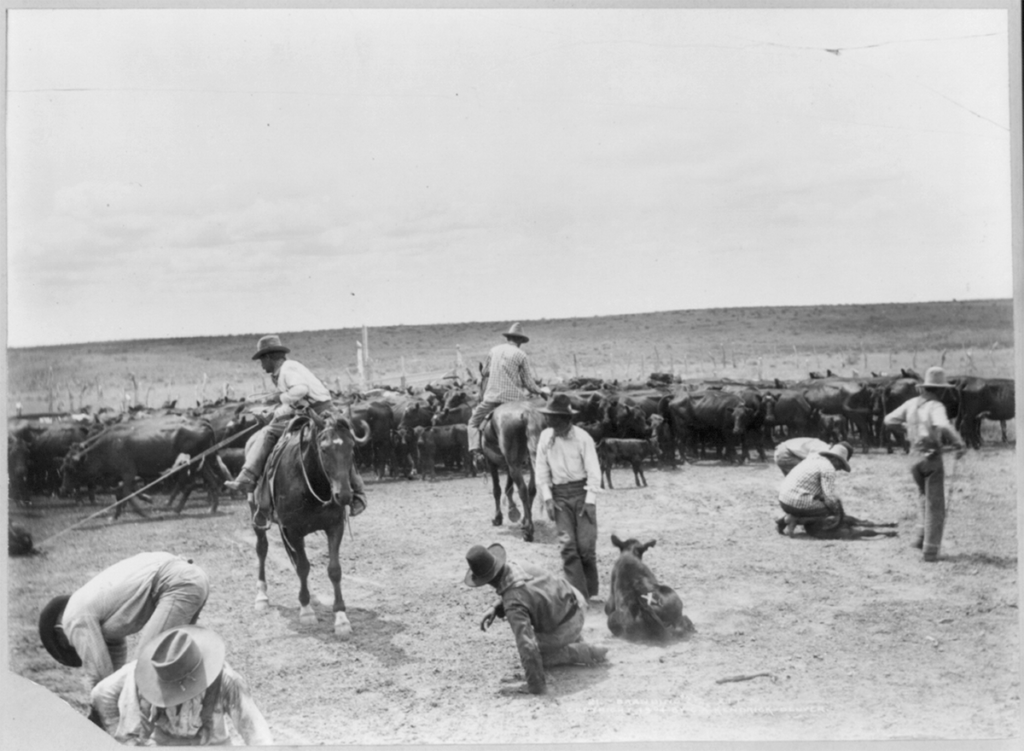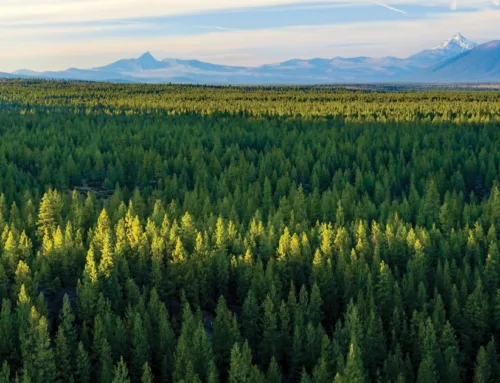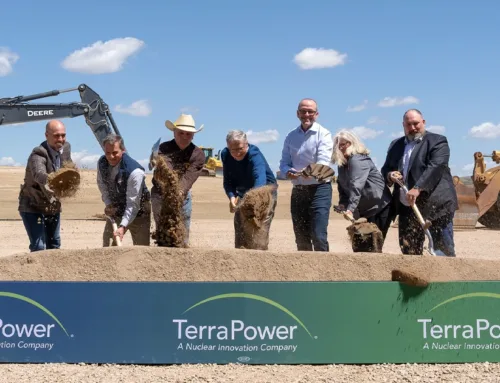XIT Ranch
XIT Ranch
By Henry Chappell
Photography By Russell Graves
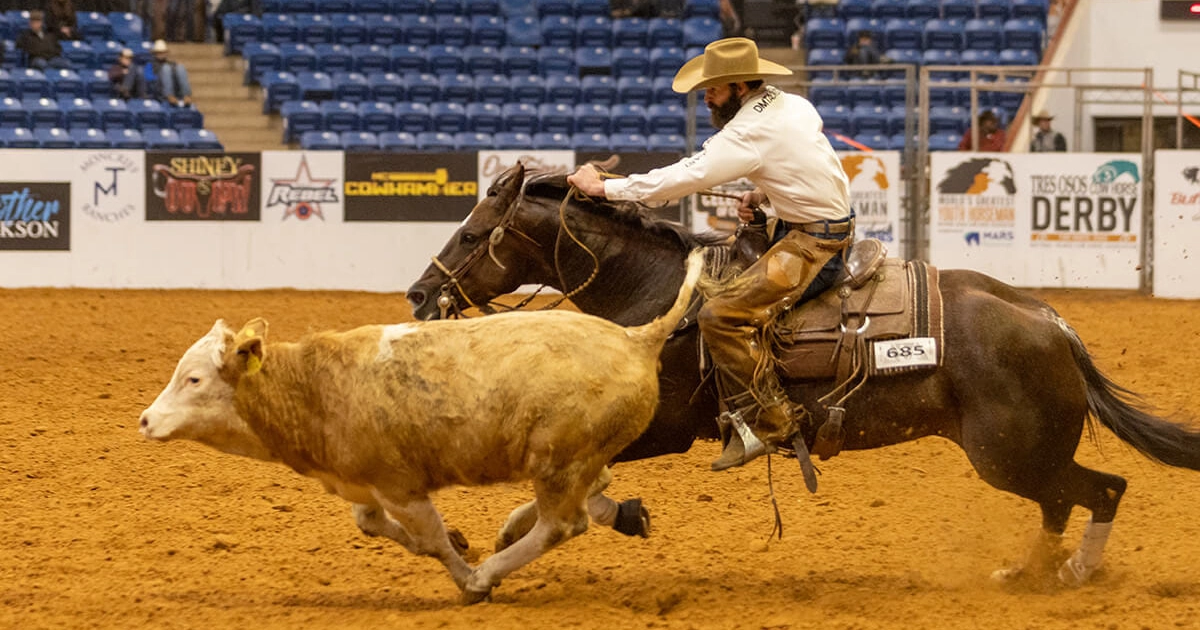
LR_XIT-01
SMART LADIES SPARKLE. Matt Koch guides an XIT Ranch mare at the Open Two Rein World Finals in Fort Worth.
Drew Knowles has a lot on his mind. He’s standing off by himself in the upper level of the John Justin Arena, watching the early morning hopefuls at the NRCHA Celebration of Champions in Fort Worth. With his back against a wall, he’s got his hands in his pockets and his eyes on the action. During breaks between entries, he tells me about his goals for his Quarter Horse operation, which is based on his ranch outside La Veta, Colorado.
Every few minutes, his eyes wander toward the far end of the arena where the lineup is listed. We start our conversation at Number 19. When Number 26 pops up, Knowles makes his way to the Owner’s Table. But he doesn’t take a seat. His entry, Number 28, is Smart Ladies Sparkle, a 7-year-old mare by the great WR This Cats Smart out of the Shining Spark mare Shiners Diamond Lady. Bred by Wagonhound Land & Livestock, she’ll be ridden by Matt Koch. Koch and Ben Baldus are Knowles’s go-to guys. They train all his performance horses. “They ride with us, not for us,” he says.
As Number 27 finishes to whoops and hollers, Knowles places his palms on the back of the chair in front of us.
“I guess you’ve done this enough times that you don’t get nervous?” I ask.
He smiles and shakes his head. “The hair on my arms stands up,” he says.
Sparkles and Koch ride into the arena and flat out nail it. They end up tying for third in the Open Two Rein World Finals, which helps propel them to win top honors as the 2021 NRCHA National Champions for sustained performance over a show season.
At that moment, though, I couldn’t help but focus on the folded paper sign perched on the table before us. The brand it displays would be familiar to anyone even slightly familiar with Texas history. But in the current context, if you’re made a certain way, with certain connections and affections, that brand – XIT – might make the hair on your arms stand up.
The Legislation
On February 20, 1879, the 16th Texas Legislature passed a law appropriating 3,050,000 acres, the sale of which would fund the construction of a new statehouse. The acreage would be selected through a survey of the five-million-acre Capitol Land Reservation in the northwest corner of the Texas Panhandle, which extended 200 miles south to the storied yellow bluffs that had been known to Comancheros, Ciboleros, and Mexican and Spanish herdsmen as las Casas Amarillas – the Yellow Houses.
Only four years had passed since the great Comanche war chief Quanah Parker and his brave band of Kwahadis rode into Fort Sill and laid down their rifles. With the Red River War now ended, and the Comanche and the Kiowa penned up on reservations in Oklahoma, the commercial hide men descended on the Texas Panhandle like a plague. They had already annihilated the bison herds in Kansas. Over the next three years, they slaughtered the remnants of the great Southern Herd. The Great Plains lobo was all but exterminated. Then came the cattlemen.
Samuel Burk Burnett’s 6666-branded cattle were already grazing on the open range along the Little Wichita. Farther north, Dan and Tom Waggoner had stocked thousands of head between the Wichita and the Red Rivers. A great boom followed. Investors from the British Isles scrambled to place funds. Plows followed cows. Towns sprang up on buffalo range. And the Lone Star State required a statehouse worthy of its ambitions and its self-perception.
The XIT Ranch Legacy
Holidays are a time for sharing memories, both old and new. That was definitely the case on Thanksgiving Day in 1992. Eleven-year-old Drew Knowles was scouring the bookshelves at his grandmother’s home in Cincinnati, looking for something to read. When he saw “XIT” on the spine of an older book, he asked his father what the letters stood for. Harvey C. Knowles III suggested that his son ask “Danny.” In no time, Marcia Tuttle Knowles — aka “Danny” — sat her grandson down before a crackling fire and shared the larger-than-life story of his third great-grandfather. John V. Farwell (1825–1908) was a Chicago dry goods merchant and a founding partner in the enterprise that built the third (and current) Texas State Capitol. In return for its construction, Farwell, his brother, and their partners received title to the largest cattle ranch in American history. Danny told stories of the cattle, the cowboys, and the outlaws that had been shared with her, including the sale of the very last tract in 1963. In closing, she placed a first edition of J. Evetts Haley’s The XIT Ranch of Texas in her grandson’s hands and said, “Everything you need to learn is in this book.”
The Syndicate
On November 9, 1881, the Texas State Capitol caught fire and burned to the ground. What had once been a legislative priority — the building of a new statehouse — quickly became a mandate. The contract was awarded to one Mathias Schnell of Rock Island, Illinois. Schnell must have been quite the character. Shortly after he landed the construction contract, he transferred a three-quarters interest to a group of Chicago investors known as the Capitol Syndicate. When it was subsequently alleged that Schnell had bribed a Capitol Commissioner and the architect, he transferred his remaining 25 percent interest to the group as well.
The Capitol Syndicate’s investors included two pairs: brothers John V. and Charles B. Farwell, and Colonels Abner Taylor and Amos Babcock. Within days of securing the contract, Babcock set out for the wilds of the Panhandle. At Fort Elliott, he procured a four-mule ambulance, an equipment wagon, and a wall tent. Then he went west and north to the boundary of the Capitol Reservation with a surveyor, some cowboys, and a Mexican cook. Over the next 36 days, this crew trekked 950 miles as they established the boundaries of the Capitol Syndicate’s one-of-a-kind asset.
Highest and Best Use
To the uninitiated, some combination of farming and ranching may have seemed like the best way to monetize the multimillion-acre tract. But those who had traversed the High Plains knew better.
In 1820, Major Stephen Long — he of Longs Peak fame — led an expedition across the High Plains and dubbed the terrain a “Great Desert.” In his notes, he described it as “almost wholly unfit for cultivation, and of course uninhabitable by a people depending on agriculture.”
Josiah Gregg seconded Long’s assessment. In his classic Commerce of the Prairies (1844), he wrote, “[the Plains] seem only fitted for the haunts of the mustang, the buffalo, the antelope, and the migratory lord, the prairie Indian.” Yet he recognized the region’s potential: “… this unequaled pasturage … affords the sufficiency to graze cattle for the supply of the United States.”
Colonel Babcock concurred with Long and Gregg. At the conclusion of his surveying tour, he recommended stocking, not farming. But there was a catch. The syndicate owned the land, but it had no funds to stock it. Enter John V. Farwell, who promptly formed the Capitol Freehold Land and Investment Company, put together his own roadshow, and took off for London. Maybe it was the man. Maybe it was the ranch. More than likely, it was both. But when Farwell returned to Chicago, he brought back $5 million, some $2 million more than constructing the capitol required.
The XIT Ranch
The first 2,500 longhorns arrived at Buffalo Springs on July 1, 1885. Legend has it that Abner Blocker, who drove the cattle from Fort Concho, drew the XIT brand in the dirt with the toe of his boot. As with the origin of many a great brand, speculation abounds. More than likely, Blocker chose one that would be hard for rustlers to modify with an iron.
John V. Farwell selected B.H. “Barbecue” Campbell to be the first general manager of the XIT Ranch. The Kansan oversaw the creation of the XIT Ranch’s eight divisions, which ran from the southern fenceline in Hockley County clear to the Oklahoma Territory: Yellow House, Spring Lake, Escarbada, Alamasitas, Ojo Bravo, Rita Blanca, Middle Water, and Buffalo Springs. The plan was to breed calves in the warmer climate and finish them farther north. By the time they were ready to be driven to Montana, the 2-year-olds would be grazing at Buffalo Springs and ready to be trailed.
After the Fort Worth and Denver City Railway arrived in 1887, Channing replaced Buffalo Springs as XIT Ranch headquarters and became another key shipping point. By then, herd size had stabilized at 150,000 head. Within a few years, the XIT Ranch employed 150 cowboys, worked 1,000 horses, and branded 35,000 calves per year. By the turn of the century, 325 windmills pumped groundwater.
And that was just in Texas. From its Panhandle range, XIT Ranch drovers trailed 12,500 cattle each year to 2 million acres of leased grounds between the Yellowstone and Missouri Rivers.
Per its business plan, the Syndicate began selling off big chunks of land to pay off investors. In 1901, George Littlefield paid $2 an acre to purchase 235,858 acres out of the Yellow House Division. William Halsell paid the same rate for 184,155 acres out of the Spring Lake Division and formed his Mashed O Ranch. By 1909, the Capitol Syndicate had redeemed its British investors and fulfilled its contract with the State of Texas. In 1912, the last XIT Ranch cattle were sold off. In 1915, the Farwell Estate formed Capitol Reservation Lands to market the remaining holdings. It took a half-century, but by 1963, the last acre of the great ranch was off the books.
Great-Great-Great-Grandson
Drew Knowles grew up in Cincinnati and attended boarding school in Connecticut. Hunting and fishing trips in the Rocky Mountains sharpened his love of the West. He majored in philosophy at the University of Colorado Boulder and earned an Executive MBA, too. Although his grandmother kindled his interest in his ranching heritage, it was his wife, Abby, who pointed him toward land management, animal husbandry, and big country. Her major at CU? Environmental studies.
“I’m often asked why I chose to go from environmental studies to culinary school,” Abby tells me. “To me, they fit together perfectly — managing the land properly with the use of cattle and other animals while producing the healthiest, most sustainable food. You get the healthiest foods through the best land management practices.”
Her heart set on sustainability and celebrating local foods, she enrolled at Le Cordon Bleu in Portland, Oregon. Abby was able to work closely with chefs who shared her interest in local producers, local foodstuffs, and local consumers. After she graduated, she worked in fine dining restaurants and as a private chef.
Drew and Abby married in 2009 and settled in Cincinnati. They moved back to Boulder when Drew began his MBA. “I was focused on other things, but Abby saw a certain kind of cattle ranch as a platform for her culinary vision. She kept after me,” he says. The couple scouted several Colorado ranches, but nothing panned out. In 2020, they found the North Star Ranch, an equestrian property in the Cucharas River Valley beneath the Spanish Peaks in South Central Colorado near La Veta. The core property serves as their Quarter Horse headquarters. It’s also home for them and their daughters Dyer and Emeret (who is named after John V. Farwell’s second wife). Their 300-head Angus herd grazes on a combination of deeded and leased pasture.
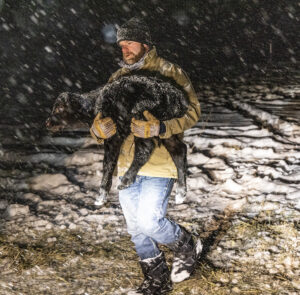
CALVING IN COLORADO “I’m definitely looking forward to calving in warmer weather,” says Knowles, shown here with a newborn calf on the Colorado Division of the XIT Ranch in March 2022.
“This is a start,” Knowles says. “We’ve been fortunate to partner with some good folks who are happy that we come in, graze really fast, and get the cattle out of there.” In 2021, the XIT Ranch earned the Savory Institute’s Ecological Outcome Verified Designation. That recognition opened additional sales channels for their beef. In 2023, XIT will transition to Wagyu bulls to meet the demand for American Wagyu.
Last October, Drew loaded up his crew and drove 450 miles to the Return to the Remuda Sale at the Four Sixes Ranch. “We knew we had one chance to make a statement, to let everybody know that we’re serious,” he says.
He couldn’t have picked a better time — or place. The Return to the Remuda Sale had it all in 2021, including its biggest crowd ever and its highest gross. At $18,000, the overall average was a 32 percent increase over 2020, which was a banner year in itself.
“We left with four horses from King Ranch, one from Beggs Ranch, and three from the Sixes, at various ages, from weanlings to a King Ranch mare out of Kineños Moon in foal to Marsala Red. For us, it’s all about the mares.”
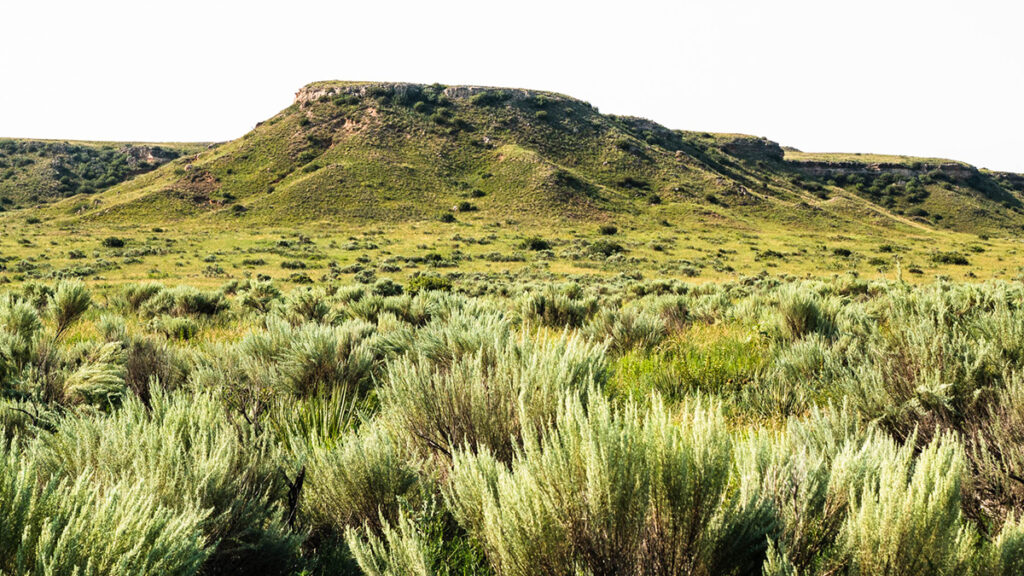
BURSON RITA BLANCA CREEK RANCH. The 11,520-acre Hall and Hall listing ticked all the boxes on Knowles’s checklist.
Gone Back to Texas
Three weeks after our first meeting at the NRCHA finals in Fort Worth, I hear fatigue in Knowles’s voice as he takes my phone call. It’s calving season in Colorado.
“Long night trying to keep calves alive,” he says. “Five degrees last night. Six inches of snow on the ground now. Three inches coming tomorrow. Seven inches the day after. But it’s all good. This is what I signed up for.”
Not surprisingly, he has his sights on warmer pastures. “We love it here. It’s beautiful. It’s a great Quarter Horse headquarters. And it’s home. But we’re quickly outgrowing it,” he says. “We need a big cattle spot. We’re boxed in here in our valley, so we’re trying to put together a deal in Texas. In fact, we need to go ahead and get our brand registered in those counties in the Panhandle where it’s currently available.”
Knowles has scouted a variety of ranches over the last year, including the Matador and another ranch just east of the Four Sixes. “They pulled that one,” he says. “Probably the Taylor Sheridan effect. What Taylor has done for the industry is fantastic. I suspect the owners decided they’d just hold onto their place for a while.”
As fate would have it, the new owner of the Four Sixes played a leading part in helping Knowles take the XIT to the next level.
“We were at the horse sale at the Sixes, and there was this guy right behind me bidding on fillies,” Taylor Sheridan tells me. “I could tell he was interested in specific bloodlines, knew what he was doing, and didn’t intend to get outbid. So he bought this filly, and the announcer said, ‘Sold to the XIT!’ I went over, introduced myself, and asked, ‘XIT as in Panhandle XIT?’ We sat and talked about the history, his ambition to restore that legacy to his family, and his ideas about going directly to consumers with his beef — which is the future of beef, in my opinion.”
The two quickly became fast friends. Knowles even went so far as to share his ambition: to bring the XIT back to Texas. Good thing he did. In December 2021, Dusty Burson, manager of the Four Sixes Dixon Creek, sent Sheridan a link to a multigenerational ranch in the Texas Panhandle. The fact that the 11,520-acre Hall and Hall listing was on the Rita Blanca Division of the original XIT Ranch due west of the old headquarters made it a no-brainer. Sheridan didn’t blink. He immediately texted Knowles the link and urged him to take a closer look.
“I had my soil and land monitoring guys doing everything they could do remotely, looking at rain and snowfall, seasonal patterns, and temp trends. They gave me a thumbs up from afar,” Knowles says. Several visits followed.
As of this writing, the 11,520-acre Burson Rita Blanca Ranch, which includes the fabled ranch’s historic Mare Pasture, is under contract to Knowles. Come closing, the XIT Ranch will return to Texas after a 60-year hiatus. How proud would Danny be?
The Rita Blanca will serve as the XIT’s cow-calf division – around 500 head, depending on conditions. “We’ll be able to calve earlier and target higher weaning weights. After Colorado, I’m definitely looking forward to calving in warmer weather,” Knowles says.
With the additional acreage, cattle can be worked at scale. This is especially important to the long-term success of a cowhorse program. While performance horses will continue to be a key component of the XIT business plan, the ultimate goal is to produce the very best all-around ranch horses. The XIT will sell a few finished horses every year and backfill with 2-year-olds. The varied terrain at Rita Blanca will make an excellent training ground and crucible.
Rita Blanca Creek runs down the middle of the ranch. A 16-acre lake stores additional groundwater. Three springs, artesian wells, and windmills ensure plenty of water during dry spells. One of those windmills — the Garden Mill — watered a vegetable patch on the venerable XIT Ranch.
“There’s actually a windmill that was installed by my family and is still operating. The fact that the Rita Blanca was once part of my family’s ranchland is very special to us,” Knowles says.
Knowles views the current divisions of the XIT Ranch as a diversified investment portfolio. “We always knew we’d have ranches in different regions and in different watersheds so that if we have a drought in one area, we can ship cows to another location,” he says.
Even then, he admits the days of building a successful ranching operation on cattle and big country alone are long gone. “I have a long-term goal of being on the Land Report 100. To accomplish our diversified agricultural goals, we’ll need to be on that list. We’ll need to be spread across geographies to mitigate risk. We’ll need a timber property. Ecological diversity and wildlife management will give us a world-class hunting operation. Minerals, solar, wind, carbon sequestration — modern ranches need all of these to succeed.” Of course, he wants a Montana division.
Lastly, I bring up what is without a doubt the most important question. Would John V. Farwell be intrigued by this pitch and pony up some cash on such an investment opportunity?
“Today with land, you can start out with a fixed cost of capital financed at historically low interest rates. In an inflationary environment, you’ll have margin expansion as commodity-linked assets like cattle are sold at higher prices. If beef prices go up 25 percent, that’s more margin we get to keep. Fed data from Dallas and Kansas City shows a 7.6 percent annual return for ranchland since 2000. If you look at that in terms of return per unit risk, I’ve got basically the same risk as a bond portfolio but with equity-like returns over the last 20-plus years. And that’s just the land,” he says.
There’s one final component that goes hand in hand with land, and Knowles believes this would seal the deal for John V.
“Ultimately, my job is to take care of the land so it can take care of my family and me, to honor the past and all the sacrifice and hard work, and to bring it into the future,” he says.
Originally published in The Land Report Texas 2022.


